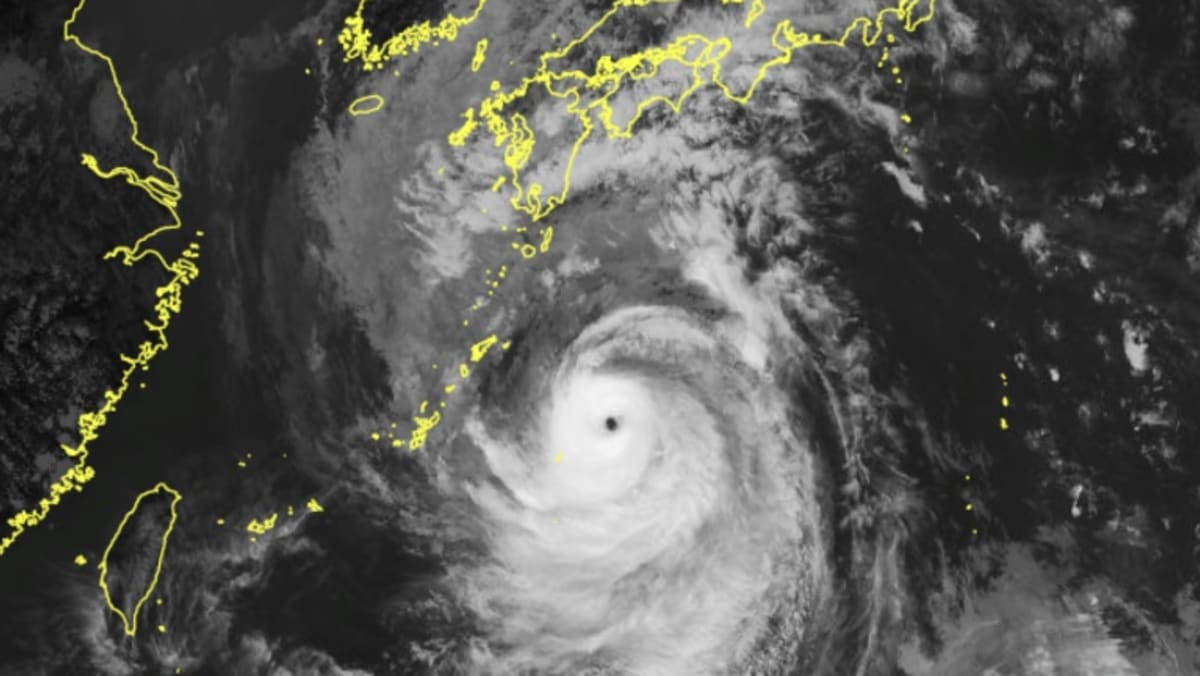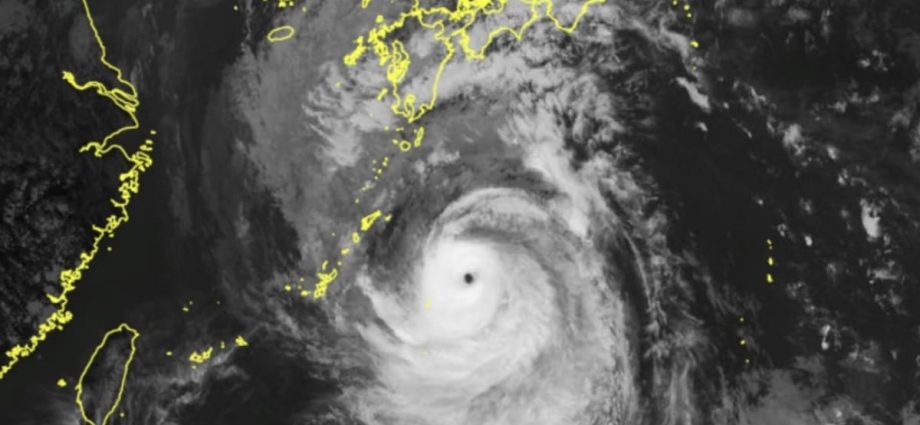
TOKYO: Japan’s weather agency warned Saturday (Sep 17) of “unprecedented” risks from a “very dangerous” typhoon heading towards the southern Kyushu island, urging residents to take shelter ahead of the storm.
Typhoon Nanmadol was producing gusts of up to 270 kmh and was classified as a “violent” storm, the agency’s top level.
By late afternoon it was approaching the remote Minami Daito island, 400km east of Okinawa island.
The storm is expected to approach or make landfall on Sunday in Kyushu’s southern Kagoshima prefecture, then move north the following day before heading towards Japan’s main island.
“There are risks of unprecedented storms, high waves, storm surges, and record rainfall,” Ryuta Kurora, the head of the Japan Meteorological Agency’s forecast unit, told reporters.
“Maximum caution is required,” he said, urging residents to evacuate early. “It’s a very dangerous typhoon.”
The weather agency has issued its highest alert for the Kagoshima region.
Called “special warnings”, these are issued only when the JMA forecasts conditions seen once in a few decades.
It would be the first typhoon-linked special warning issued outside of the Okinawa region since the current system began in 2013.
“The wind will be so fierce that some houses might collapse,” Kurora told reporters, also warning of flooding and landslides.
An evacuation “instruction” – level four on a five-level scale – is already in place for 330,000 people in Kagoshima, and authorities urged people to move to shelters or alternative accommodation before a top-level call was issued.
Evacuation warnings in Japan are not mandatory, and during past extreme weather events authorities have struggled to convince residents to take shelter quickly enough.
Kyushu Railway Co began halting some train lines on Saturday ahead of wider suspensions on Sunday.
Hundreds of weekend flights in the southern region were being cancelled, broadcaster NHK reported, causing confusion among passengers travelling over the long weekend.
Convenience store chain Seven-Eleven Japan would temporarily shut about 610 stores in the Kyushu and Chugoku regions from Saturday night, local media reported.
Japan is currently in typhoon season and faces around 20 such storms a year, routinely seeing heavy rains that cause landslides or flash floods.
In 2019, Typhoon Hagibis smashed into Japan as it hosted the Rugby World Cup, claiming the lives of more than 100 people.
A year earlier, Typhoon Jebi shut down Kansai Airport in Osaka, killing 14 people.
And in 2018, floods and landslides killed more than 200 people in western Japan during the country’s annual rainy season.
Ahead of Typhoon Nanmadol’s arrival, flight cancellations began to affect regional airports including those in Kagoshima, Miyazaki and Kumamoto, according to the websites of Japan Airlines and All Nippon Airways.
Scientists say climate change is increasing the severity of storms and causing extreme weather such as heat waves, droughts and flash floods to become more frequent and intense.

